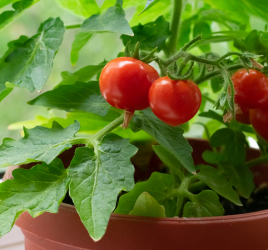
How Gardening Adds Value or Subtracts it From Your Home

If you are a gardener or a lover of plants and all things green, right now you are in your happy place. The air is warm, all danger of frost has passed, the sun shines almost every day, and your flowers are blooming.
Your vegetable garden may be coming in too. All of your ornamental pots and window boxes are looking beautiful. You might, right now, be considering what else to plant in your garden or how you can expand it and make it even more amazing.
However, will it add value to your home? Not all of us are able to stay in a forever home, well, forever. Most people will eventually need to sell, even if it is to downsize later in life.
Does any type of landscaping or garden add value to a home?
You might be surprised to find that the answer is no. Not all gardens add value. But many kinds of landscaping do add value – and a lot of value too. If you are asking yourself how to be smart about what you add next, here is a guide for what adds, and how much, and what you should avoid.
The Added Value of Gardening
We are used to terms like “curb appeal” in conjunction with home value. In fact, there are whole shows on Home and Garden television dedicated to creating a lush outdoor space to raise the value of one’s home.
It’s no secret that good curb appeal goes a long way toward getting people into your home when it comes time to sell. It helps to net higher offers than if your home’s exterior is lackluster.
There is not one concrete number for a return on investment for landscaping. However, tends to be high. Some reports indicate a 150% return, while others are over 200% and up to 1000%.
If the typical advice of any realtor is accurate, it does pay to take extra care of your lawn and landscaping – in real dollars.
It depends on what you are paying most attention to, though. The truth is, those basics are the most important.
Basic Home Gardening Tasks
- Weeding
- Edging
- Mulching
- Maintaining the grass to make it green and as full as possible (preferably without chemicals).
- Adding color with annuals, perennials and flowering shrubs.
- A flagstone walkway.
- Stone planters
- A well-placed and well-cared-for deciduous tree.
Gardening to Add Value Strategies
There are a couple of ways to think about landscaping that will appeal, not only to your family and your guest, but potential buyers now and down the road.
One is to read up on the architectural style of your home and match your landscaping style to it.
The other is find the most attractive, low-maintenance plants to create the bulk of your garden or landscaping and fill in with bright annuals.
You will want to choose the right perennials. You want the plants that do well in your area with minimal watering. Choose plants and mulch enough that potential owners don’t see a weeding nightmare in their future.
One rule of thumb I have heard is to invest about 10% of your home’s value in the landscaping. This is whether up front or over many years – to get back all you have invested and more.
Cost Effective Gardening Tips
If you don’t have that kind of money to spend and you are looking at ways to improve your home’s curb appeal before selling, consider just a few things, done well,
- Make sure your grass is mown, edged, green, and as full as possible.
- Paint your front door and get modern house numbers.
- Add some potted flowering plants near the door.
- Make sure what you do have is weed-free and well-mulched.
These things go a long way toward showing potential buyers that you have taken good care of the yard and that it can be expanded in the years to come.
How Gardening Can Subtract from Value of Your Home
We all know that saying, “beauty is in the eye of the beholder.” Never is it truer than with gardeners. This is the one way you can go wrong with your garden toward adding value to your home: overdoing it.
I am not trying to discourage you from cultivating that lush rose garden you’ve always wanted – especially if you’re planning to live in your home for many years. However, if you’re truly wondering what could hurt you in the long run, here are a few examples.
Front Yard English Gardens
So many of us gardeners see pictures of lush, old-fashioned gardens with small meandering paths and we long to re-create that sense of wonder for visitors. The trouble is those gardens are a lot of work. Even some of the most inexperienced home buyers will look at your years of painstaking work and see just that: years of painstaking work.
Extensive Landscaping
Extensive landscaping can feel like a burden to a potential homeowner. Whereas grass can be easily taken-care-of and landscaping requires work including weeding, mulching, dead-heading, and watering.
Think carefully about expanding your garden too much. You may want to think, instead, about adding hardscape that is modern, attractive and low-maintenance. For example, a flagstone walkway, a low deck, a fire pit or a pergola.
Koi Ponds
Maybe I don’t need to say more, but to some buyers, a koi pond could look like a headache, or an expense needing to be dealt with. Not to mention, for families with little children, a potential drowning site. Again, if your perfect retreat includes those beautiful goldfish, go for it. Just be prepared to offer to take it apart again if you need to sell.
Shrubs in Front of the House
Those huge, flowering shrubs you love so much? They could be an eyesore to another person. Anything that hides your actual house, no matter how beautiful, can subtract from its value.
Vegetable Garden Plots
Vegetable gardens are wonderful. What gardener wouldn’t want to move into a new house with a garden plot already tilled and fenced-off? The trouble is, not everyone wants to grow a veggie garden.
Without the actual growing plants, it’s just a bare patch of dirt with an unsightly fence around it. For this reason, if you don’t plan to stay in your home forever, raised beds might be a better option.
Takeaway
Far be it from me to discourage any kind of gardening. But if you’re not going to be in your house forever, your best bet is to take care of all the basics before you extend your landscaping or plant anything high-maintenance. In addition, if you are looking to make the biggest bang for your buck, you can’t go wrong with happy, colorful annuals in pots and window planters across the front of your house.



